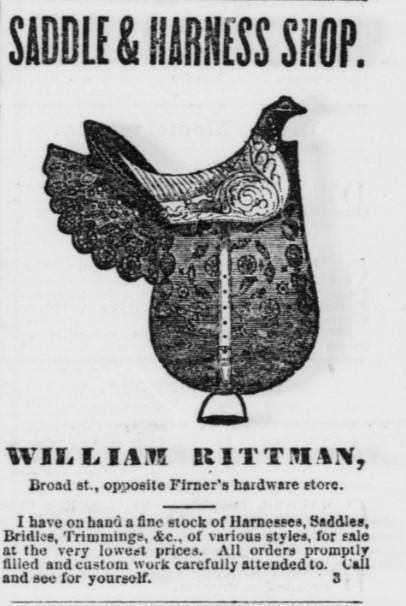The Mystery of the Missing Saddle Cut: A Lesson in Newspaper Rivalries and 19th-Century Printing Practices
Randi Ramsden is the Program Manager for the Wisconsin National Digital Newspaper Program at the Wisconsin Historical Society.
Arguments and rivalries carried out in newspapers are as old as the medium itself. In the U.S. context, Thomas Paine (in)famously decried Robert Bell for reprinting Common Sense and thereby depriving Revolutionary soldiers of the mittens Paine wanted to buy them with his profits from the pamphlet (Pennsylvania Evening Post 1776). Sound outlandish? Wait until I tell you about a battle I recently uncovered in nineteenth-century Wisconsin newspapers.
On July 24, 1869, the weekly Wisconsin State Register accused the editors of a rival newspaper, the Prescott Journal, printed 209 miles away, of stealing a prized piece of type metal, their “saddle cut.” The editors of the Wisconsin State Register noted that such an image of a saddle had recently appeared in the Prescott Journal, an image “acquir[ed] without patronizing a type foundry.”
Six days later, the editors of the Journal responded to the Register’s attempt to “saddle” (see what they did there?) them with this accusation by insulting the newspaper as a “Pictorial,” implying it offered more pretty pictures than substantive reporting. They described their recent visit to the Register’s printing office as one in which they were scrutinized severely. Finally, they offered a saddle cut they allegedly had “saddled upon” them some time ago in exchange for a sack of flour.
These accusations and insults between the newspapers garnered attention outside of the confines of these two newspapers. On August 6, the Dodgeville Chronicle reported on the dispute, siding with the Register and interpreting the Journal’s response as a confession. The following day, the Register addressed the matter one last time further insisting on the return of the stolen property.
Being the newspaper history detective that I am, I wanted to see what clues the printed newspaper pages themselves might reveal. In the 1860s, newspaper printers worked with large printing presses and individual movable type. Printing offices housed cases full of type to be able to print text in different fonts and sizes. These types could be purchased from type foundries across the country.
Typically, printers browsed catalogs advertising a type foundry’s specimens of printing type, and from there, they placed an order. A printing office’s inventory needed to be large enough to set at least one whole page of text at a time. However, newspapers printed more than text, even in 1869. Embellishments, ornamental frames, and illustrations all can be found in historical newspapers and were especially popular in the advertisement columns. To print these, printing offices used so-called “cuts,” which were somewhat like a metal version of rubber stamps used in crafting today. Cuts could also be ordered from type foundries, electrotypers, and engravers. Therefore, a “saddle cut” quite literally refers to the cut used to print the image of a saddle.
It is worth noting that when the Journal first responded to the theft allegations, the same page flaunted an image of a saddle in an advertisement for a local saddle and harness shop. Was this merely coincidence or pure malice? To answer this question, I took a look at both newspapers to see when one stopped printing saddle images and the other started. Much to my surprise, the Register actually didn’t print any images of saddles the entire year prior to the exchange. The Journal had started using the saddle cut in question on May 7, 1869. Hence, just by the comparison of the two publications, I cannot come to a satisfying conclusion.
The printed pages were not going to solve this mystery, so I turned to the people behind these pages. Rivalries between editors were not uncommon, and I noted that this exchange hints at a familiarity between the two parties involved. Furthermore, the fact that they did not need to compete for a shared local audience suggests a shared backstory between these editors.
Rockwell J. Flint and Edwin H. Weber edited the Journal, and both had been printers before going into business together. When they decided to purchase their first newspaper in Prescott in November 1868, they were, in fact, working at the printing office of the Portage Wisconsin State Register under the editors Brennan and Turner. Not only did they personally know the editors who would accuse them of stealing eight months later, they also knew their way around their printing office. One could assume that bad blood between the editors and printers led to the dispute, but according to the Manitowoc Tribune, the editors of the Register were supportive of Flint and Weber’s new business venture: “The Register gives them a hearty endorsement and expresses confidence that they will prove worthy successors.”
I may never know if the mystery of the saddle cut was the result of playful mischief between colleagues, serious theft, or simply a case of thoughtless misplacement. The Prescott Journal will soon be added to the eighteen million pages in Chronicling America, so you too can be a detective into history’s mysteries, big and small.
![Wisconsin State Register, July 24, 1869. [https://chroniclingamerica.loc.gov/lccn/sn85041339/]](/sites/default/files/styles/large/public/2021-09/Fig1.jpg?itok=ZX5L0y6f)
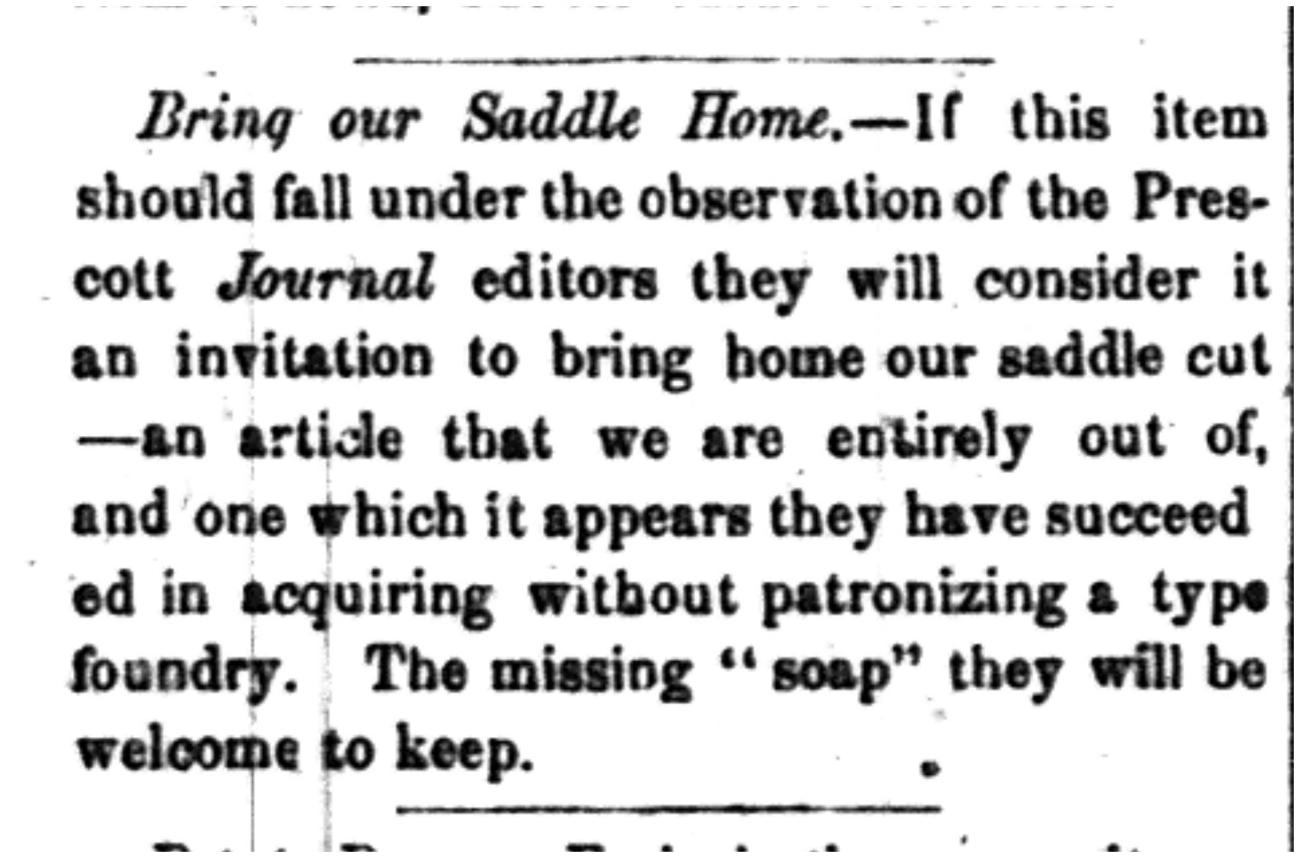
![Prescott Journal, July 30, 1869. [https://chroniclingamerica.loc.gov/lccn/sn85033221/]](/sites/default/files/styles/large/public/2021-09/Fig2.jpg?itok=P-sK61Sg)
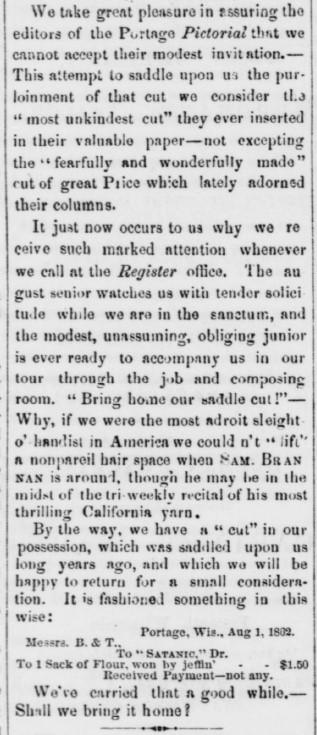
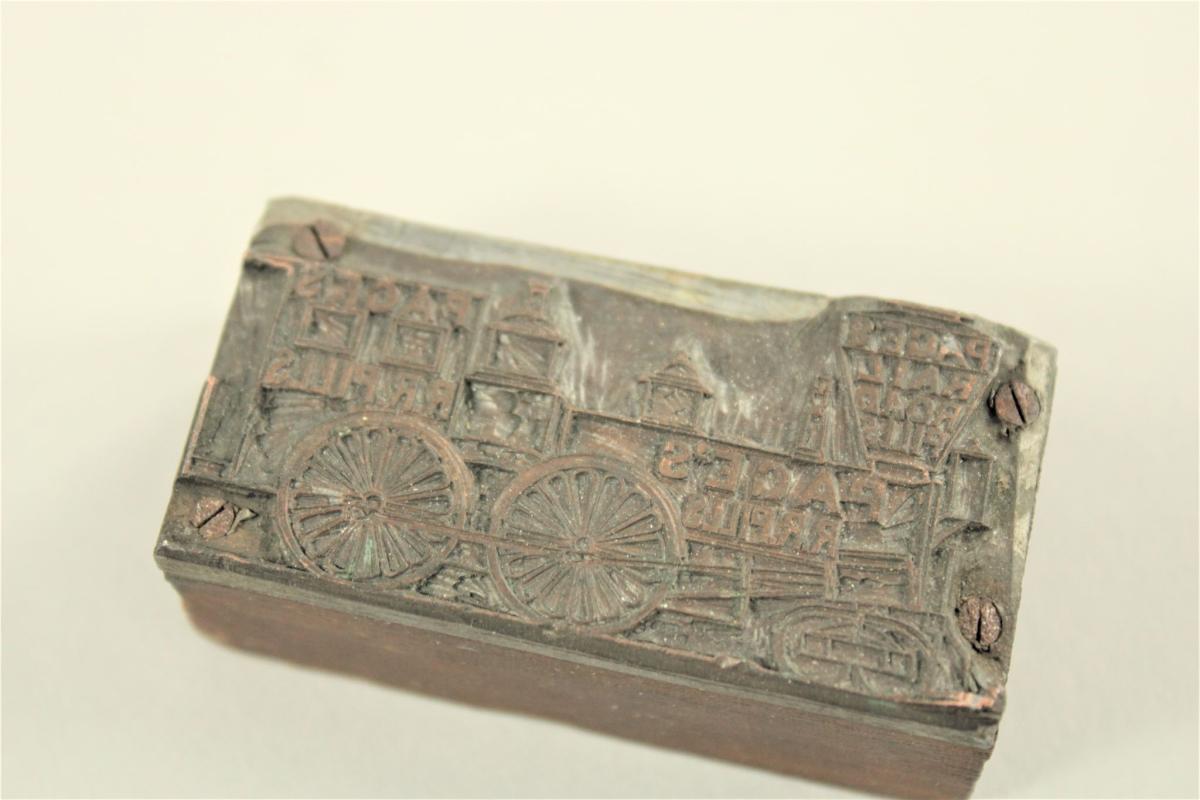
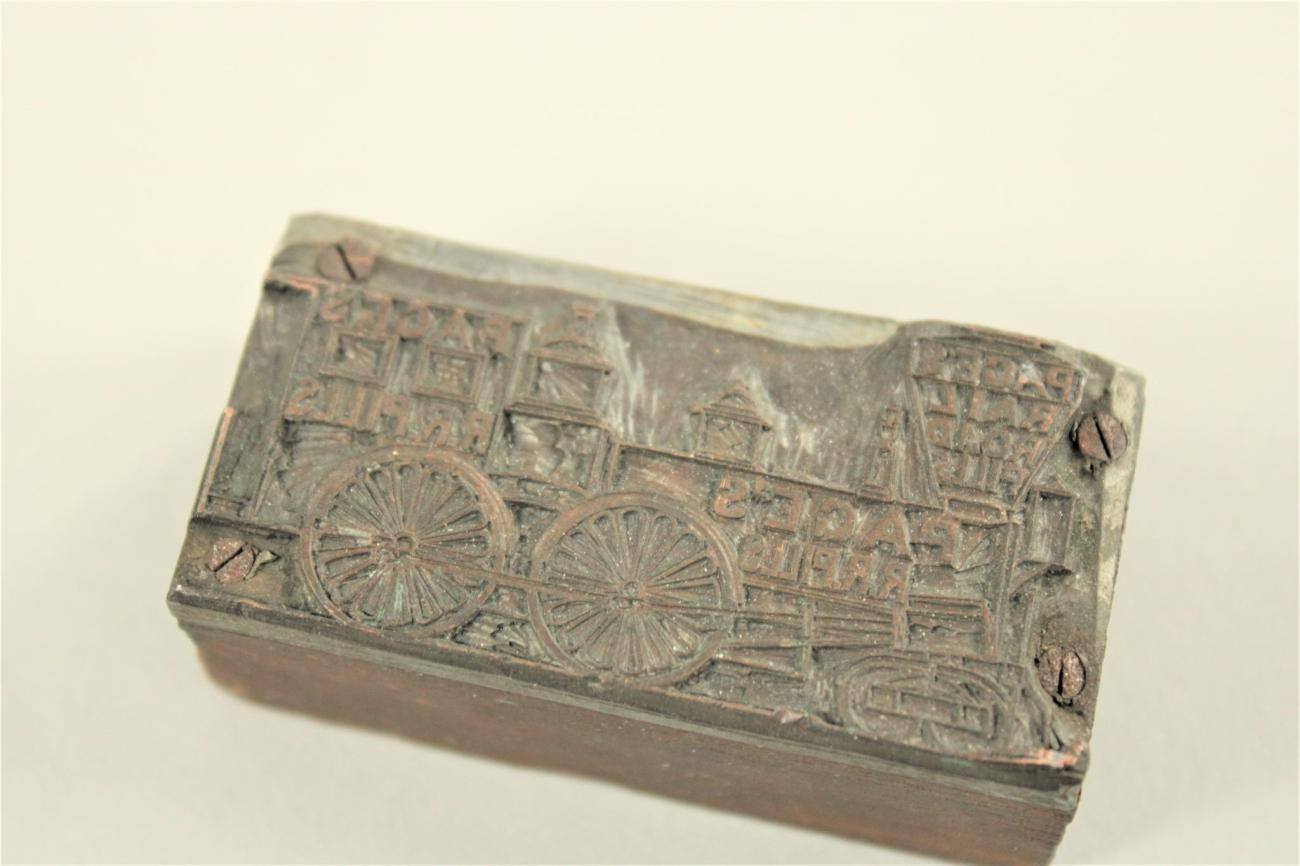
![Saddle advertisement. Prescott Journal, July 30, 1869. [https://chroniclingamerica.loc.gov/lccn/sn85033221/]](/sites/default/files/styles/large/public/2021-09/Fig4.jpg?itok=8siRpV8d)
